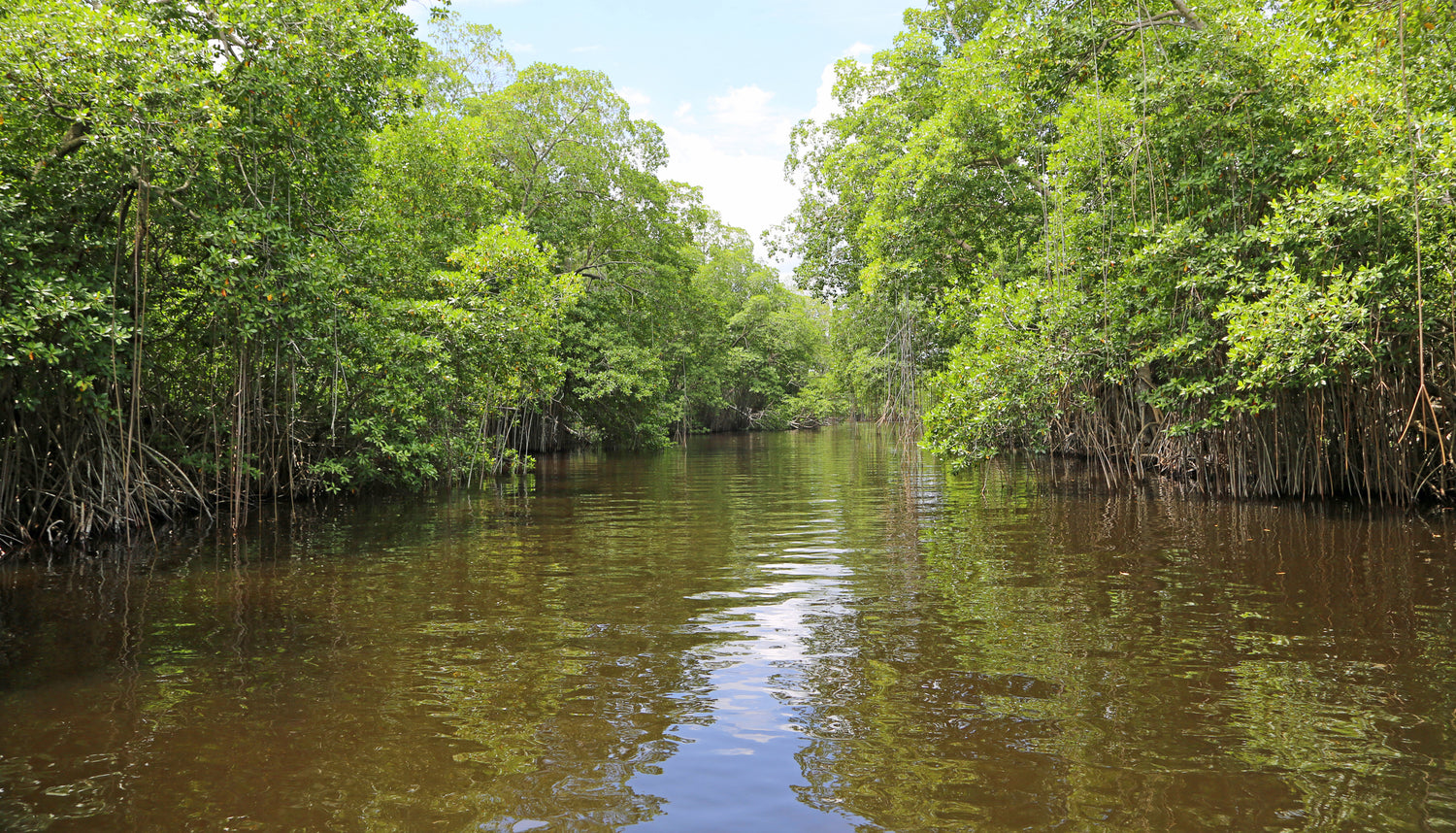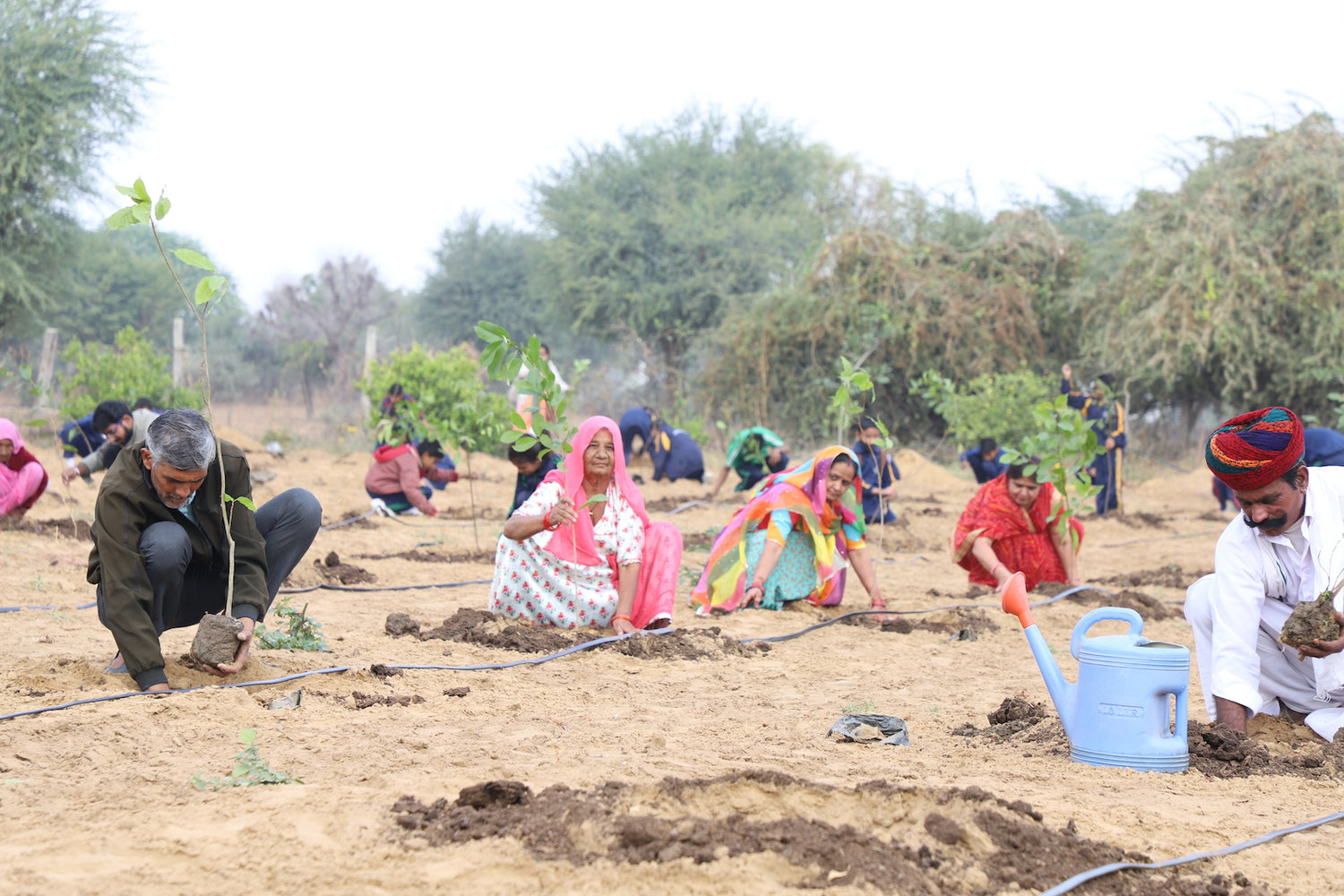Mangroves in Andhra Pradesh: Exploring the Mangrove Havens of the Goda
Mangroves in Andhra Pradesh are vital ecological assets, particularly in the Godavari and Krishna deltas. These mangrove ecosystems serve as natural s Read more
Connect with us
-
👥 Corporates
If you are looking for:
- 🌲 Tree Plantation Events
- 📊 CSR Projects
📧 corporate@growbilliontrees.com
📞 +91 9699723523
💬 +91 9325931304 WhatsApp (Only)
🕒 Mon - Sat | 10am - 7pm IST
-
🧩 Tree Plantation NGOs
If you are looking for:
- 💰 Financial Assistance
- 🤝 Operational Support
📧 support@growbilliontrees.com
📞 +91 9699723523
💬 +91 9325931304 WhatsApp (Only)
🕒 Mon - Sat | 10am - 7pm IST
-
🌼 Individuals
If you are looking for:
- 👥 Group Tree Plantation Drive
- 🌳 Bulk Tree Plantation
📞 +91 9699723523
💬 +91 9325931304 WhatsApp (Only)
🕒 Mon - Sat | 10am - 7pm IST
Trending
Trees for Corporates
Mangroves in Andhra Pradesh: Exploring the Mangrove Havens of the Godavari and Krishna Deltas
Mangroves in Andhra Pradesh are vital ecological assets, particularly in the Godavari and Krishna deltas.
These mangrove ecosystems serve as natural shields against coastal erosion, store carbon, and support diverse flora and fauna, while sustaining livelihoods for local communities.
Andhra Pradesh’s mangroves are a perfect blend of environmental and economic significance, making their conservation essential for sustainable development.
Mangroves in Andhra Pradesh have been a part of its coastal landscape for centuries. Ancient records suggest that these areas were historically used by local communities for fishing, honey collection, and medicinal plants.
The Godavari and Krishna deltas have been vital trade hubs since ancient times, with mangroves providing timber for boats and shelter for fish breeding.
However, deforestation and urbanization in the 20th century significantly depleted these mangroves, raising alarms for their restoration.
Mangroves are exceptional in mitigating climate change, as they store carbon up to five times more efficiently than tropical forests.
They act as natural barriers, protecting Andhra’s coastline from cyclones, tidal waves, and erosion. Mangroves also filter water by trapping sediments and pollutants, ensuring clean aquatic ecosystems.
Furthermore, they serve as breeding grounds for marine species, supporting the region’s fishing industry.
The Godavari and Krishna delta mangroves are biodiversity hotspots.
Species like the critically endangered fishing cat, saltwater crocodile, and numerous migratory birds thrive in these ecosystems. Mangroves also support aquatic life, including crabs, shrimp, and fish, crucial for both biodiversity and local economies.
- Cyclone Shields: During cyclones like Hudhud (2014) and Phailin (2013), mangroves absorbed much of the impact, saving lives and properties inland.
- Carbon Powerhouses: Andhra’s mangroves are among the most carbon-rich forests in India, making them vital in the fight against climate change.
- Natural Hatcheries: These mangroves are nurseries for commercially important fish, boosting Andhra’s fishing industry.
- Coastal Beauty: The mangroves in Andhra Pradesh are a unique blend of ecological function and natural splendor, attracting eco-tourists to explore their serene landscapes.
Mangroves in the Godavari and Krishna deltas face challenges like deforestation, aquaculture expansion, and pollution.
Urban development and agriculture often encroach on mangrove areas, leading to habitat loss. Additionally, rising sea levels due to climate change threaten to submerge large parts of these ecosystems.
Grow Billion Trees is spearheading efforts to conserve and restore mangroves in Andhra Pradesh. Through innovative methods and grassroots partnerships, it is ensuring these critical ecosystems thrive.
Partnerships:
- Collaborating with state forest departments and local NGOs for mangrove restoration projects.
- Engaging with academic institutions to study mangrove health and biodiversity.
Execution:
- Establishing nurseries for native mangrove species and distributing saplings to coastal communities.
- Organizing plantation drives in degraded areas with the help of local volunteers.
- Using drones and satellite imagery to monitor mangrove growth and health.
Promotion:
- Raising awareness through campaigns, workshops, and social media about mangroves’ ecological and economic importance.
- Promoting sustainable aquaculture practices to reduce pressure on mangrove ecosystems.
Godavari Delta Restoration: Grow Billion Trees has planted over 500,000 mangrove saplings in degraded areas of the Godavari delta, creating a thriving green belt.
Community-Led Conservation: Local fishing communities in the Krishna delta have partnered with Grow Billion Trees to protect mangroves while ensuring sustainable livelihoods.
Mangrove Education Programs: School workshops in coastal villages have educated over 10,000 students about the importance of mangroves.
By 2030, Andhra Pradesh’s mangroves can serve as a model for coastal resilience, supporting biodiversity, reducing carbon footprints, and sustaining livelihoods. With dedicated efforts, mangroves could be restored to cover up to 15% more of the state’s coastline.
The mangroves of the Godavari and Krishna deltas are more than ecological treasures—they are life-support systems for Andhra Pradesh.
Their conservation is essential for biodiversity, climate resilience, and community well-being. Grow Billion Trees is leading this effort with innovative strategies and community-driven solutions, ensuring that these mangrove havens continue to thrive for generations to come.
Mangroves in Godavari Delta
The Godavari delta mangroves are nature’s first line of defense, shielding the coast from storms while supporting diverse marine life and local livelihoods. They’re a perfect mix of natural beauty and ecological power.
Mangroves in Krishna Delta
These mangroves are the delta’s natural engineers, preventing erosion, filtering water, and hosting a vibrant array of fish, birds, and reptiles. A critical habitat that also fuels Andhra’s fishing economy.
Cyclone Protection by Mangroves
Andhra’s mangroves act as green shields, reducing the impact of cyclones like Hudhud. They’re nature’s way of saying, “Don’t worry, I’ve got this.”
Mangroves and Carbon Storage
These coastal forests are carbon champions, storing more CO2 than most terrestrial ecosystems. In the fight against climate change, Andhra’s mangroves pack a serious punch.
Biodiversity in Mangroves
Home to the fishing cat, saltwater crocodiles, and countless bird species, these mangroves are a hotspot for wildlife that deserve every bit of attention and protection.
Mangroves and Aquatic Life
From shrimp nurseries to crab havens, these mangroves sustain Andhra’s thriving fishing industry. They’re underwater party zones where marine life flourishes.
Mangroves and Livelihoods
Local communities depend on these mangroves for honey, fuelwood, and fish. They’re more than forests; they’re life-sustaining ecosystems for thousands.
Threats to Mangroves
Rising seas, pollution, and aquaculture expansion are eroding these vital forests. Without urgent action, Andhra’s mangroves could face a rough tide ahead.
Grow Billion Trees in Andhra
This initiative is replanting degraded mangroves, engaging locals, and using tech to track progress. It’s the region’s strongest ally for sustainable mangrove conservation.
Mangroves and Tourism
Eco-tourism in Andhra’s mangroves is growing, with serene boat rides and bird-watching trips drawing nature enthusiasts. Conservation meets exploration in these tranquil landscapes.
Mangroves and Water Quality
Acting like natural water filters, these mangroves trap sediments and purify water, ensuring healthier ecosystems for all who depend on them.
Community-Led Mangrove Conservation
Local fishermen and women are the unsung heroes of mangrove protection, working with initiatives like Grow Billion Trees to safeguard these precious ecosystems for future generations.
You may like
Corporate Plantations
FAQ
What are the mangroves in Andhra Pradesh?
The mangroves in Andhra Pradesh, especially in the Godavari and Krishna deltas, are dense coastal forests that protect the coastline, store carbon, and house diverse wildlife. Grow Billion Trees works to restore and expand these critical ecosystems.
How do mangroves protect Andhra’s coastline?
Mangroves act as natural barriers, absorbing storm surges and preventing erosion. Grow Billion Trees strengthens this shield by planting resilient mangrove species in vulnerable areas.
What is the role of mangroves in biodiversity?
Mangroves are homes to species like fishing cats, crocodiles, and migratory birds. Grow Billion Trees ensures their habitats thrive through sustainable restoration projects.
How do mangroves support local livelihoods?
They provide resources like fish, honey, and fuelwood while sustaining the fishing industry. Grow Billion Trees engages communities to balance livelihood needs with conservation.
What are the threats to Andhra’s mangroves?
Deforestation, pollution, and aquaculture expansion threaten these forests. Grow Billion Trees addresses these challenges with reforestation drives and awareness campaigns.
Can mangroves mitigate climate change?
Absolutely! Mangroves store carbon at rates higher than most forests. Grow Billion Trees scales up mangrove plantations to amplify their climate benefits.
What makes Godavari delta mangroves unique?
They host rich biodiversity and act as nurseries for marine life. Grow Billion Trees focuses on protecting this vital ecosystem with targeted conservation projects.
How do Krishna delta mangroves benefit aquatic life?
These mangroves provide breeding grounds for shrimp and fish, fueling the fishing economy. Grow Billion Trees restores degraded mangrove zones to support marine habitats.
What is Grow Billion Trees doing for Andhra’s mangroves?
We replant mangroves, engage locals, and monitor growth using advanced technology. Grow Billion Trees ensures a sustainable future for these forests.
How do mangroves improve water quality?
Mangroves trap pollutants and sediments, purifying water for marine ecosystems. Grow Billion Trees highlights this natural filtration in its conservation efforts.
What is the role of communities in mangrove conservation?
Local communities are guardians of mangroves, and Grow Billion Trees trains them in sustainable practices to protect these ecosystems while securing their livelihoods.
How does mangrove eco-tourism benefit conservation?
Eco-tourism promotes awareness and funds restoration projects. Grow Billion Trees supports mangrove tourism in Andhra as a way to balance exploration with preservation.























